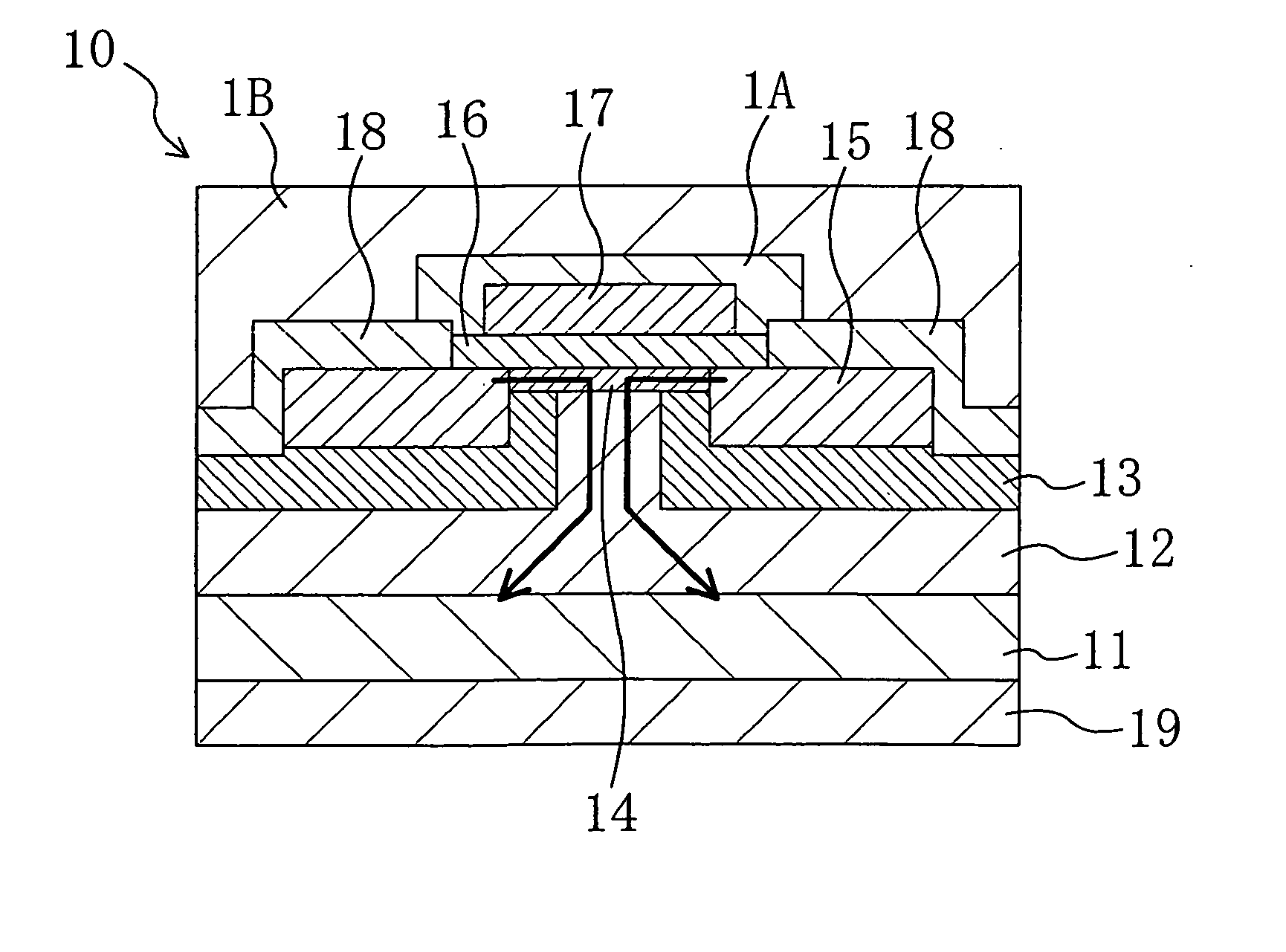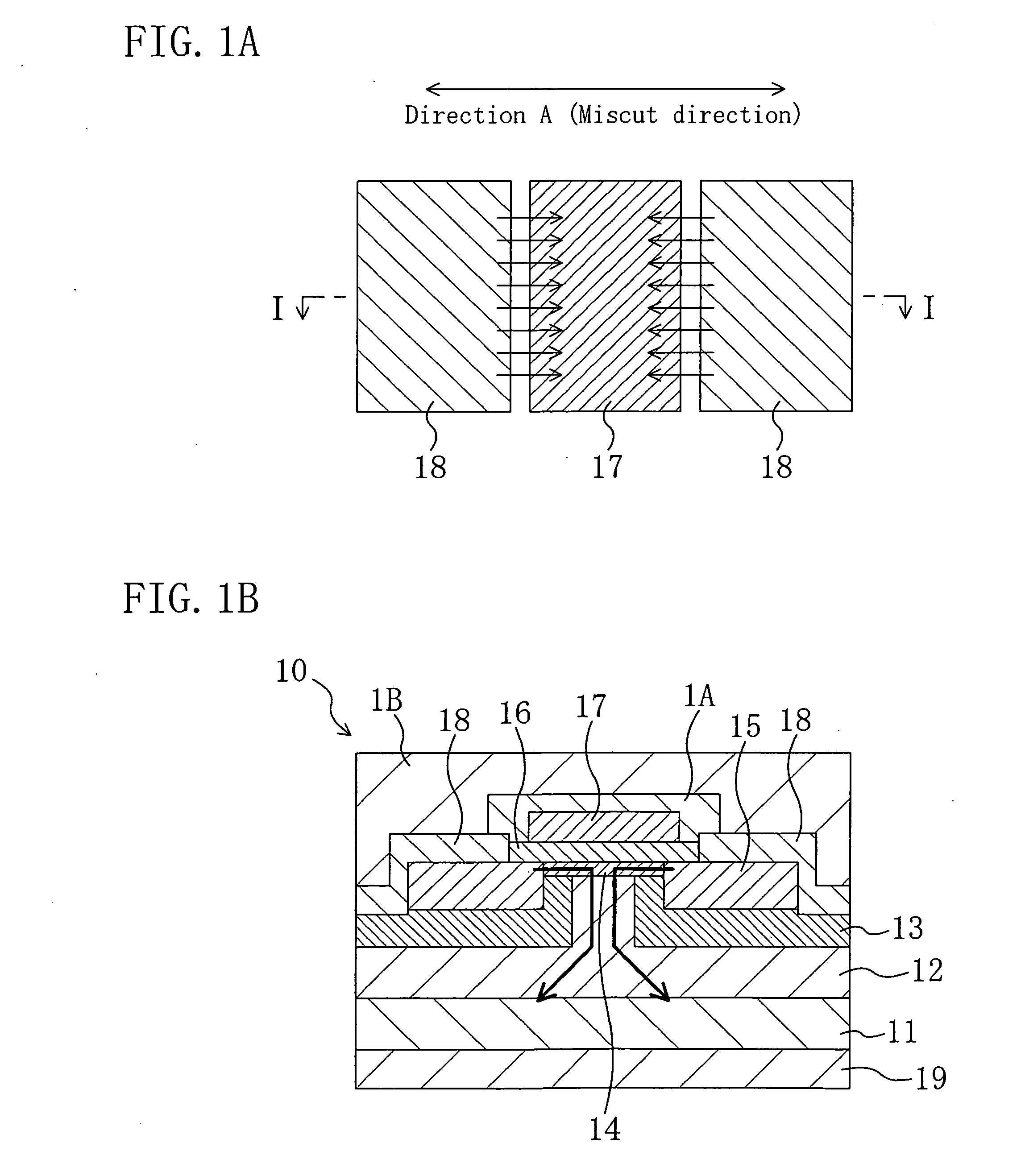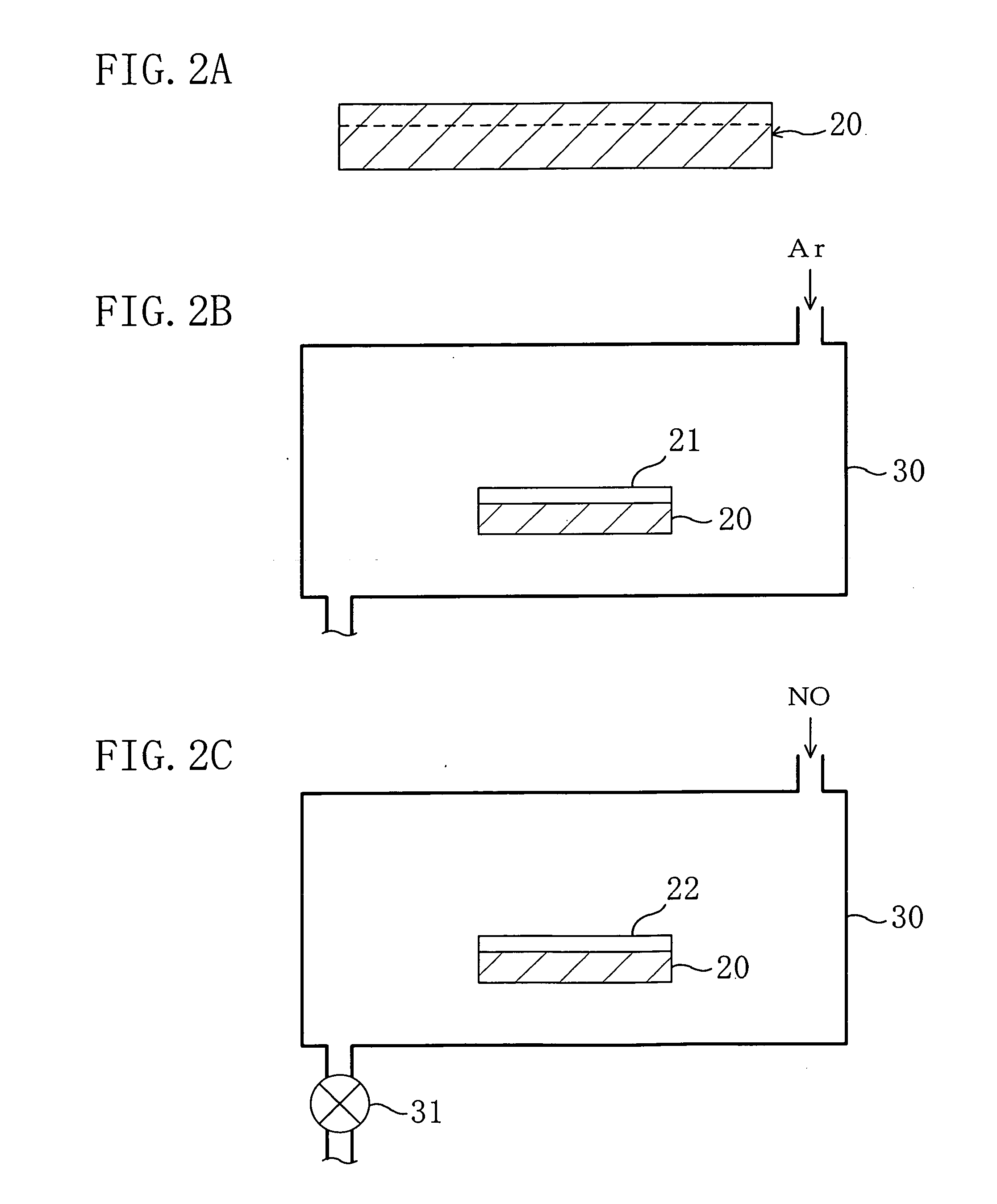Semiconductor element
a technology of semiconductor elements and semiconductors, applied in the field of high-breakdown voltage isolation gate semiconductor devices, can solve problems such as anisotropy in electrical characteristics, and achieve the effect of excellent electrical characteristics and reduced electron mobility
- Summary
- Abstract
- Description
- Claims
- Application Information
AI Technical Summary
Benefits of technology
Problems solved by technology
Method used
Image
Examples
embodiment 1
[0104] FIGS. 1(a) and 1(b) are cross-sectional views showing a joint between two unit cells of typical vertical accumulation-mode MOSFETs using a silicon carbide layer in a first embodiment. FIG. 1(a) is a plan view showing some of electrodes of the MOSFETs, and FIG. 1(b) is a cross-sectional view taken along the line I-I in FIG. 1(a).
[0105] As shown in FIGS. 1(a) and 1(b), a semiconductor device of this embodiment has an n+-type 4H—SiC(0001) semiconductor substrate 11. The semiconductor substrate 11 has a surface miscut by approximately 8 degrees in the direction, and its resistivity is approximately 0.02 Ωcm2. An n-type 4H—SiC(0001) silicon carbide layer 12 is formed on the semiconductor substrate 11 to have a thickness of approximately 15 μm and doped with nitrogen at a concentration of 3×1015 cm−3. The n-type silicon carbide layer 12 is formed on the semiconductor substrate 11 by epitaxial growth, and the influence of the semiconductor substrate 11 causes the top surface of th...
embodiment 2
[0149] FIGS. 11(a) and 11(b) are cross-sectional views showing typical lateral accumulation-mode MOSFETs using a silicon carbide layer according to a second embodiment. FIG. 11(a) is a plan view showing some of electrodes of the MOSFETs when seen from above, and FIG. 11(b) is a cross-sectional view taken along the line VII-VII in FIG. 11(a).
[0150] As shown in FIGS. 11(a) and 11(b), a semiconductor device of this embodiment has a semi-insulating 4H—SiC(0001) semiconductor substrate 71. The semiconductor substrate 71 has a surface miscut by approximately 8 degrees in the direction. A 4H—SiC(0001) p-type silicon carbide layer 72 is formed on the semiconductor substrate 71 to have a thickness of approximately 5 μm and doped with aluminum at a concentration of 5×1015 cm−3.
[0151] An n-type channel layer 74 is formed in the middle region of the upper part of the p-type silicon carbide layer 72. In this embodiment, the channel layer 74 is a δ-doped layer obtained by alternately stacking ...
PUM
 Login to View More
Login to View More Abstract
Description
Claims
Application Information
 Login to View More
Login to View More - R&D
- Intellectual Property
- Life Sciences
- Materials
- Tech Scout
- Unparalleled Data Quality
- Higher Quality Content
- 60% Fewer Hallucinations
Browse by: Latest US Patents, China's latest patents, Technical Efficacy Thesaurus, Application Domain, Technology Topic, Popular Technical Reports.
© 2025 PatSnap. All rights reserved.Legal|Privacy policy|Modern Slavery Act Transparency Statement|Sitemap|About US| Contact US: help@patsnap.com



